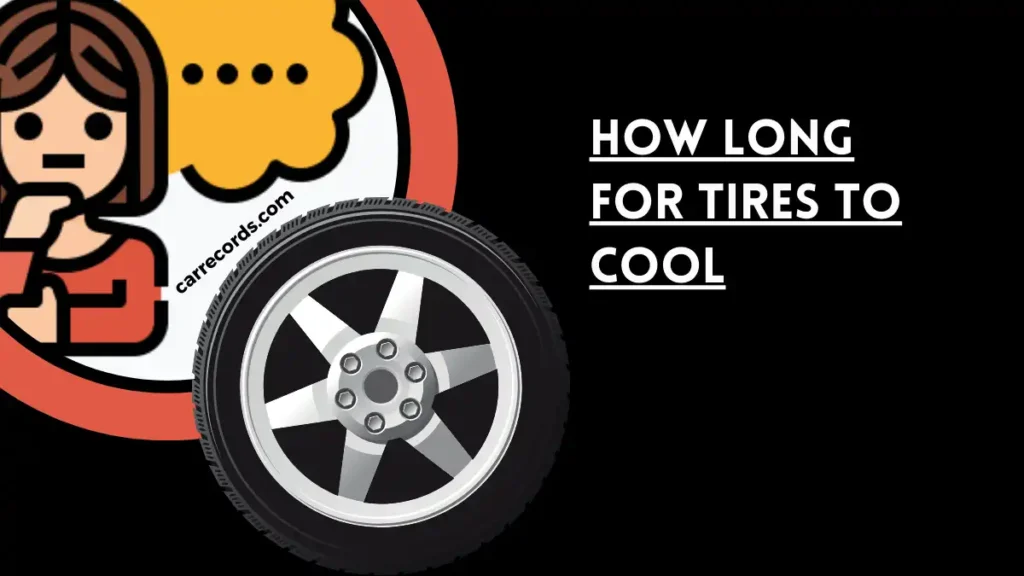✔️ How long for tires to cool?
Around three hours Tires reach the cold state after approximately three hours of parking, or if the vehicle has traveled less than a mile (1.6 km) at a moderate speed.
When it comes to the care and maintenance of your vehicle, understanding the nuances of your tires’ temperature is essential. Have you ever wondered why your tires feel hot after a long drive? Delves into the science behind tire heat generation, the factors influencing tire temperature, and the crucial question: How long does it take for tires to cool down?
How Long Does It Take for Tires to Cool?
Whether you’re performing routine maintenance like refilling air or considering tire replacement, allowing your tires to cool down is a critical step. After extensive driving, tires need to reach a stable temperature before any measurements or interventions can be accurately carried out.
The general guideline is to let your vehicle sit for a minimum of 3 hours after a significant drive to ensure complete cooling. However, certain scenarios may demand longer cooling periods, such as extended driving sessions in hot weather conditions.
Why Do Tires Get Hot?
The phenomenon of tires heating up is primarily attributed to the interplay between friction and temperature. Friction between the rubber of the tires and the road’s surface generates heat, contributing to the warming effect. Additionally, several factors come into play:
Outside Temperature:
The ambient temperature greatly affects tire heat. Direct sunlight exposure causes tires to absorb heat, leading to an increase in the air chamber temperature within the tire. This temperature rise is particularly significant on scorching days.
Air Pressure Changes:
Elevated temperatures cause air molecules within the tire to expand, increasing pressure. Researchers have determined that a mere 10-degree rise in ambient temperature leads to a 1 psi expansion of the tires.
Load Distribution:
As your vehicle becomes laden with passengers and cargo, the contact patch of the tires widens. This increased contact area and constant tire flexing due to load distribution contribute to heat generation.
Speed and Driving Habits:
Higher speeds result in a higher friction coefficient between the tire and the road. Frequent acceleration, abrupt braking, and tight maneuvers impose additional stress on the tires, causing them to heat up significantly.

3 Ways to Help Your Tires Cool Down
While natural cooling over a few hours is optimal, there are instances where you might want to expedite the cooling process:
- Park in Shade: If possible, park your vehicle in a shaded area to prevent direct sunlight exposure and facilitate quicker cooling.
- Cold Water Rinse: Running cold water over the tires can aid in dissipating heat rapidly. This method should be used cautiously to avoid sudden temperature changes that could potentially damage the tires.
- Slow Down: As you approach your destination, ease off the accelerator and decelerate gradually. This reduces friction and minimizes heat buildup.
FAQ: People Also Ask
Q1: Why do my tires feel hot after driving?
Tires become hot due to friction between the rubber and the road, especially during extended drives and high speeds. Factors like ambient temperature and load distribution also contribute to the heat buildup.
Q2: Can hot tires cause damage?
Yes, excessive heat can potentially damage tires. It can lead to increased tire wear, reduced tire lifespan, and even tire blowouts in extreme cases.
Q3: How does speed impact tire heat?
Higher speeds result in increased friction between the tires and the road, leading to greater heat generation. Frequent high-speed driving can accelerate tire wear and reduce their overall performance.
Q4: Are there long-term effects of overheated tires?
Yes, overheated tires can suffer from reduced structural integrity, weakened sidewalls, and diminished tread life. It’s crucial to avoid prolonged overheating to ensure optimal tire health.
Q5: Should I check tire pressure when they’re hot?
Tire pressure should ideally be checked when the tires are cold. Heat causes air molecules to expand, leading to inaccurate pressure readings if checked immediately after driving.
Q6: Can underinflated tires overheat faster?
Yes, underinflated tires have a larger contact area with the road, leading to increased friction and heat generation. Proper tire inflation helps prevent overheating and ensures safer driving conditions.
Final Thoughts
Caring for your vehicle’s tires involves more than just keeping them inflated and maintaining tread depth. Understanding the mechanisms that cause tires to heat up and adopting appropriate cooling measures can significantly impact their longevity and performance. By striking the right balance between driving habits, cooling techniques, and regular maintenance, you can ensure that your tires serve you well on the road while minimizing the risks associated with overheating.
